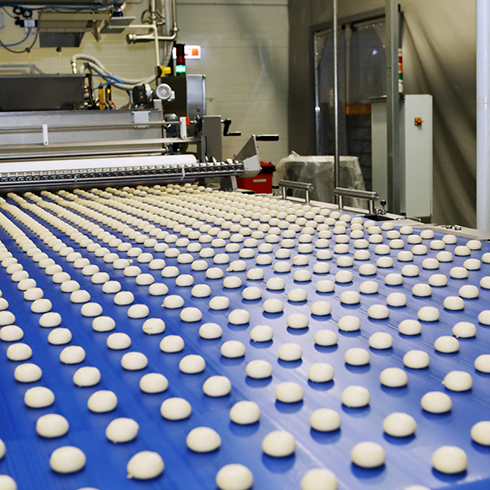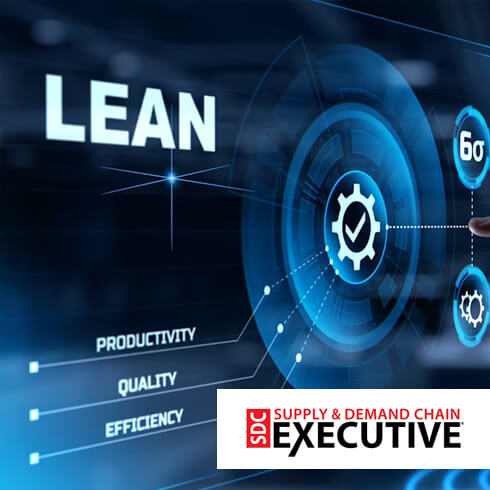Lean manufacturing is widely adopted as a methodology to drive efficiency, reduce costs, and boost productivity. However, for many organisations, Lean becomes a check-the-box exercise—applied as a set of processes rather than a deeply integrated approach to culture and operations. Embedding Lean principles into an organisation’s core is essential to fully transform performance and mindset.
Lean drives continuous improvement by eliminating waste and optimising processes. At the heart of this methodology are the seven wastes: transportation, inventory, motion, waiting, overproduction, over-processing, and defects. Addressing these inefficiencies is crucial for any successful Lean transformation. Importantly, this responsibility does not fall solely on operators but extends to every organisation member, from the shop floor to the boardroom. Organisations can only tackle waste effectively and maintain continuous improvement through a collective, sustained effort.
This blog explores the seven wastes, offering actionable steps for addressing them, whether you’re just starting your Lean journey or looking to refine existing processes. By understanding waste elimination, organisations can unlock long-term success.
-
Overproduction: Producing More or Earlier Than Needed
Overproduction is one of the most prevalent forms of waste and occurs when products are manufactured in excess quantities or earlier than required to meet customer demand. Many businesses produce extra stock ‘just in case’ it is needed, creating a mismatch between planned production and actual demand. This leads to excess products that consume capital, occupy storage space, and incur unnecessary storage costs.
In one manufacturing scenario, overproduction was traced to poor coordination between production and demand planning. This misalignment resulted in the creation of unnecessary stock. By introducing a more effective scheduling system, the company implemented demand-driven strategies like Just-In-Time (JIT) and Kanban, synchronising production with actual demand, reducing waste, and improving resource utilisation.
-
Waiting: Idle Time for People or Equipment
Waiting waste occurs when employees, equipment, or systems remain idle due to delays, gaps, or a lack of synchronisation. This not only results in lost time but also introduces hidden costs within the production system. While waiting may seem minor, it disrupts production flow and significantly affects productivity.
In one facility, waiting waste was a major challenge as operators frequently waited for materials to arrive. By optimising material management and aligning the supply schedule with the actual production rate, waiting times were reduced substantially. This allowed operators to focus on their tasks, enhancing workflow efficiency. Eliminating waiting waste is one of the most effective ways to improve production flow and operational performance.
-
Transport: Unnecessary Movement of Materials
Transport waste refers to the unnecessary movement of materials or products, which increases time, cost, and risk without adding value. Excessive transport is particularly problematic in facilities with inefficient layouts that fail to align with Lean principles.
For example, raw materials were stored far from the production line in one production facility, requiring frequent and time-consuming transportation. Transport times were minimised by redesigning the layout and relocating materials closer to the production area. This not only improved the production flow but also reduced handling costs, directly benefiting the bottom line.
-
Inventory: Raw Materials, WIP, and Finished Goods
Inventory waste refers to any stock that exceeds immediate production requirements, including raw materials, work in progress (WIP), and finished goods. Poor inventory management ties up capital, incurs higher storage costs, and often masks deeper inefficiencies, such as overproduction or planning gaps.
In one example, a manufacturer with millions of dollars in excess inventory took a closer look at their stock levels. By implementingJust-In-Time (JIT) inventory, they reduced stock levels, freeing up capital that could be reinvested into more value-generating activities. Reducing inventory waste improves cash flow and uncovers inefficiencies within the production system, boosting operational effectiveness.
-
Motion: Unnecessary Movements by People
Motion waste arises from unnecessary physical movements by employees, often due to poorly organised workstations. Actions such as excessive reaching, bending, or walking to retrieve tools waste time, cause fatigue, and increase the risk of injury, negatively impacting productivity and employee morale.
Operators frequently had to leave their workstations in an automotive plant to gather tools. By reorganising workstations with operator input, tools were placed within easy reach, reducing unnecessary movement and improving workflow. This sped up production and created a safer, more ergonomic work environment.
-
Over-Processing: Doing More Work Than Necessary
Over-processing occurs when more resources or steps are used than necessary to meet customer needs. This waste often results from redundant quality checks, unnecessary finishing touches, or outdated practices that add cost but no value, often due to poor alignment with customer expectations.
For instance, a food packaging company applied elaborate packaging that their customers did not value. The company saved time and materials without compromising on quality by simplifying the packaging process to meet rather than exceed customer expectations. Eliminating over-processing allows companies to focus resources on areas that truly add value, improving efficiency and reducing costs.
-
Defects: Rework and Scrap Due to Quality Issues
Defects waste arises when products fail to meet quality standards, resulting in rework, scrap, and customer dissatisfaction. Addressing defects requires strong quality control measures and root cause analysis to identify and eliminate underlying issues.
At one manufacturing facility, defect rates were high due to insufficient quality checks at a specific production stage. Defect rates were significantly reduced by identifying this gap and implementing targeted training and quality improvements. This lowered material and labour costs while improving customer satisfaction and protecting the brand’s reputation. Defects also waste valuable resources by producing unsellable products, directly impacting profitability.
It’s Important to Recognise, See, and Take Action
Managing waste in Lean manufacturing requires a structured approach:Recognise, See, and Take Action. These steps help organisations identify, observe, and address waste effectively in real time.
- Recognise the type of waste: To identify each type of waste, teams must differentiate between value-added activities, non-value-added but necessary activities, and pure non-value-added activities (waste). Recognising waste as it occurs is crucial for proactive elimination.
- See the waste in real time: The most effective way to assess inefficiencies is to go to Gemba and observe the production process directly on the shop floor. This clarifies where and why waste occurs, enabling actions based on real data, not assumptions.
- Take action with tailored solutions:
- Value-Added Activities: Streamline these processes to ensure each step adds value to the customer.
- Non-Value-Added but Necessary Activities: Minimise the impact of these activities, even when required by logistical or regulatory constraints.
- Pure Non-Value-Added Activities (Waste): Eliminate these entirely to improve efficiency and reduce costs.
This approach—Recognise, See, and Take Action—should be integrated across the organisation to systematically address waste, enhance Lean principles, and drive continuous improvement.
Creating an Environment of Continuous Improvement
A culture of continuous improvement is crucial for Lean’s long-term success. It’s about sustained commitment to waste reduction across all areas of the business rather than quick, isolated fixes. Key actions to foster this mindset include:
- Regular Training:Ensure every employee understands Lean principles and waste identification techniques.
- Gemba Walks: Leaders should spend time on the shop floor, engaging with employees to gain real-time insights into inefficiencies.
- Cross-Functional Collaboration: Breaking down silos encourages communication, helping teams identify waste across departments.
- Kaizen Events: Regular Kaizen events focused on specific waste reduction goals provide employees with an opportunity to contribute actively to Lean transformations.
Addressing the seven wastes in Lean is a continuous journey. By consistently reducing waste, organisations improve efficiency, lower costs, and foster a culture of continuous improvement. When everyone is engaged in eliminating waste, Lean becomes the backbone of a resilient, efficient organisation—driving long-term, customer-focused business success.






